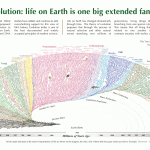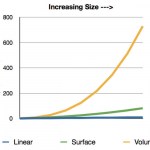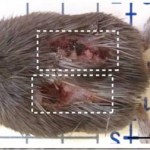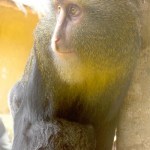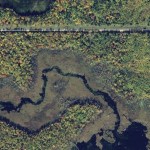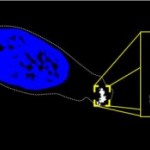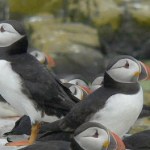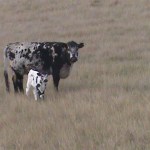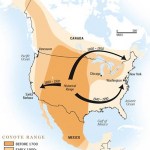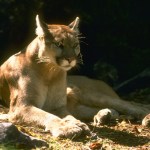I have lived among Cannibals, according to a lot of people who claim to know. The number of times that the "tribal" people of the Congo have been called cannibals is too great to be counted, most notably in great literature like The Heart of Darkness but most commonly, I suspect, from the pulpit or soap box by those raising money to spread this or that word. Most Europeans and Americans don't know it, but many people who live in the Congo are quite convinced that the bazunga ... the white foreigners ... are cannibals. I've listened closely to these assertions, made by many individuals, and…
Life Sciences
New research rethinks the possible prevalence of life in the Universe, suggesting that our asteroid belt—as disrupted by the gravitational influence of Jupiter—played a key role in seeding the Earth with water and organic compounds. Unable to coalesce, and situated around the solar system's "snow line," the belt provides millions of little ice trays which come smashing into the Earth on occasion. On Starts With a Bang, Ethan Siegel says "getting struck by asteroids can introduce new organics and materials into the ecosystem, and can knock off the apex animals of the time, paving the way for…
"The important point is that since the origin of life belongs in the category of at least once phenomena, time is on its side. However improbable we regard this event, or any of the steps which it involves, given enough time it will almost certainly happen at-least-once. And for life as we know it, with its capacity for growth and reproduction, once may be enough." -George Wald
That there's an amazing story of life's evolution on Earth is a scientific certainty. The evidence is encoded in the nucleic acid sequences of every living organism ever discovered, and the history of life on this…
I approve this plan. A number of researchers have gotten together and worked out a grand strategy for sequencing the genomes of a collection of cephalopods. This involves surveying the phylogeny of cephalopods and trying to pick species to sample that adequately cover the diversity of the group, while also selecting model species that have found utility in a number of research areas — two criteria that are often in conflict with one another. Fortunately, the authors seemed to have found a set that satisfies both (although it would have been nice to see the Spirulida and Vampyromorpha make…
Allen's Rule. One of those things you learn in graduate school along with Bergmann's Rule and Cope's Rule. It is all about body size. Cope's Rule ... which is a rule of thumb and not an absolute ... says that over time the species in a given lineage tend to be larger and larger. Bergmann's Rule says that mammals get larger in colder environments. Allen's Rule has mammals getting rounder in colder climates, by decreasing length of appendages such as limbs, tails and ears.
All three rules seem to be exemplified in human evolution. Modern humans tend to be larger and rounder in cooler…
You might be familiar with tissue regeneration in amphibians and reptiles where limbs can be fully regenerated following an injury. Until now, tissue regeneration following a wound was thought to be limited in mammals (ex: deer shed and regrow their antlers annually; some mice can regrow the tips of their fingers).
Researchers discovered that African spiny mice are able to regrow skin, complete with hair follicles, after an injury. We are not talking about simple wound healing, but actual skin regeneration without scarring. Researchers suspect this unique ability may have evolved to help them…
Adult male lesula monkey discovered in the Democratic Republic of Congo. Image: M. Emetshu. PLOS One, doi:10.1371/journal.pone.0044271.g007.
Dr. John Hart, Scientific Director of the Lukuru Wildlife Research Foundation in Kinshasa, discovered the colorful lesula monkey while sifting through photos brought back from a 2007 field expedition to the Democratic Republic of Congo. Shown in the photo was a little girl named Georgette feeding one. The monkeys have blond manes and upper chests with a bright red patch on their lower backs. After extensive…
If I told you that evolution was in crisis, what would you think I meant? You would probably think I meant that the theory was on its way out. You would think that new discoveries had shown the untenability of evolution, and that biologists were in despair over their lack of a central organizing principle. You would think that maybe those creationists and ID folks weren't as crazy as you had been told. If you're an old hand at this you might even recall Michael Denton's 1986 book Evolution: A Theory in Crisis, which proved so inspirational to ID folks in the years before Philip Johnson…
In Minnesota’s Lakes Country, what we sometimes call “Up North,” the people have various degrees of knowledge of the land and its wildlife. Cabin people and campers visit briefly and may learn in detail the workings of a particular lake or patch of forest, but are usually poorly informed of the true nature of the landscape. People with “lake homes” (seasonally used cabins on steroids owned by people who live elsewhere) may spend more time in Lakes Country but actually know less about it than campers might because having central heating and air conditioning, a paved driveway, and big-ass SUV…
At least half the time, it seems that when I take on a relatively new topic with every intention of just doing one post about it I somehow end up doing more than one post. I don't know why that is. It just seems to happen. Sometimes, I find something related to but sufficiently different that interests me, sometimes seemingly quite at random. Sometimes someone responds to my post in such a way that I feel obliged to answer. Sometimes, readers make me aware of variations on a theme, so to speak, either in the comments or by e-mailing me links. That's what happened this time.
Yesterday I posted…
Magnetite in a fish nasal cell. Image: The Scientist from Herve Cadiou, University of Cambridge
In a prior blog, we talked about different animals that are able to sense the Earth's magnetic field. The mystery of how fish, and perhaps other animals, do this may be solved. Animals use the magnetic field like a compass. This is an important skill especially to migratory species who don't have the benefit of Google Maps. It is sort of a built-in GPS system.
Dr. Michael Walker from the University of Auckland discovered that brain cells connected to the nasal cavity of fish can be…
A lot of animal cams suck. The angle is bad, the lighting is poor, the animal is usually not there, etc. etc. But this puffin cam is actually pretty darn good. When the bird pecks at the camera you want to duck.
Check it out.
It's from Audubon. Here's some text from the press release:
Seal Island, Maine – June 27, 2012 – explore.org, the philanthropic media organization and division of the Annenberg Foundation, is expanding its collection of live HD cameras to bring people into the world of the charismatic and much-revered Atlantic Puffin. Through a multiyear partnership with Audubon,…
This is the last of 16 student posts, guest-authored by Jessica Waters.
Climatologists have been warning us about the ongoing and impending consequences of global warming for years. But the results of climate change affect more than just polar bears and penguins - if you live anywhere in the northeastern, north-central or west coast states of the U.S.., you could be at a greater risk for contracting Lyme Disease.
Lyme disease is an infection of the Borrelia burgdorferi bacterium that is spread through black legged ticks (otherwise known as deer ticks) who feed on the…
This is the thirteenth of 16 student posts, guest-authored by Jessica Ludvik.
One Disease, Many Species
Brucellosis, more commonly known as undulant fever in humans or bangs disease in cattle, is one of the oldest bacterial scourges of livestock-producing nations, especially those in which the animals live in close proximity with the human population. The disease is caused by bacteria of the genus Brucella. Within this category are many species of bacteria, each almost exclusive to a particular animal species. A few of the most common seen in veterinary and human…
This is the twelfth of 16 student posts, guest-authored by Stanley Corbin.
Disease in wildlife is an important concern to the health and safety of humans and domestic animals. The expanding growth of our nation and resultant land use changes with urbanization has resulted in a shrinking habitat and fragmentation for all animals, including humans. The effects of ecological disruption are universally recognized and adversely effects wildlife through multiple mechanisms.
Hand it to the coyote (Canis latrans) for its ability to exist with humans. The resilience of this animal can be…
This is the eighth of 16 student posts, guest-authored by Michelle Formanek.
For many of us in the scientific world, particularly budding infectious disease epidemiologists like myself, the Plague (or, more dramatically, the “Black Death”) is a prime example of the rapid and devastating spread of an infectious disease. So devastating, in fact, that it wiped out nearly one-third of the population in Europe in the mid-1300’s. That’s roughly equal to 25 million people. It then persisted and has caused various outbreaks throughout history, most notably the Great Plague of London in…
Image from Scientific American
Great news for cougars: According to a recent study published in The Journal of Wildlife Management, cougars (Puma concolor) are beginning to repopulate the Midwest after an extended absence going back to the early 20th century. Their population declined in the Midwest when prey dwindled and they were being hunted to protect livestock and humans. Visit this website for a timeline of their decline across the Midwest. By the end of the 20th century, the animals were mainly restricted to the Western United States.…
This is the second of 16 student posts, guest-authored by Eileen Ball.
The beauty of dogs and cats as companions is that we don’t have to raise them to go out into the world and be successful. As pet parents we can set the household “rules” according to what works for us and get on with enjoying our pets; hopefully for many years. According 2011-2012 APPA National Pet Owners Survey cats have now surpassed dogs as the most common household pets in the United States. Despite this fact the same survey reports that in 2010 only 30% of US veterinary patients were…
At last! Here is the much delayed Carnival of Evolution 48!
I must begin by apologizing for my tardiness, especially since John Wilkins managed to post the last one on time. I was traveling in the 2½ weeks preceding the deadline for CoE, and the combination of spotty internet access, extreme jetlag (British Columbia to Germany to Iceland, where the sun hovered around the horizon all night long, just messed me up), and of course, the incredible distractions of exotic foreign lands, meant that I was disgracefully dilatory in putting it all together.
To reward your patience (or punish you…
It's always amusing to see creationists try to explain why Charles Darwin was wrong, especially when they make up lists of reasons "Darwin's theory of evolution does not hold up to scientific scrutiny." These are always people who wouldn't know what scientific scrutiny was if it knocked them immobile with a carefully measured dose of Conus snail toxin, strapped them to an operating table, and pumped high-intensity Science directly into their brains with a laser. As I often wish I could do.
Anyway, some ignorant jebus-lover hacked together a list of 10 "mistakes" that Darwin made. Strangely,…
